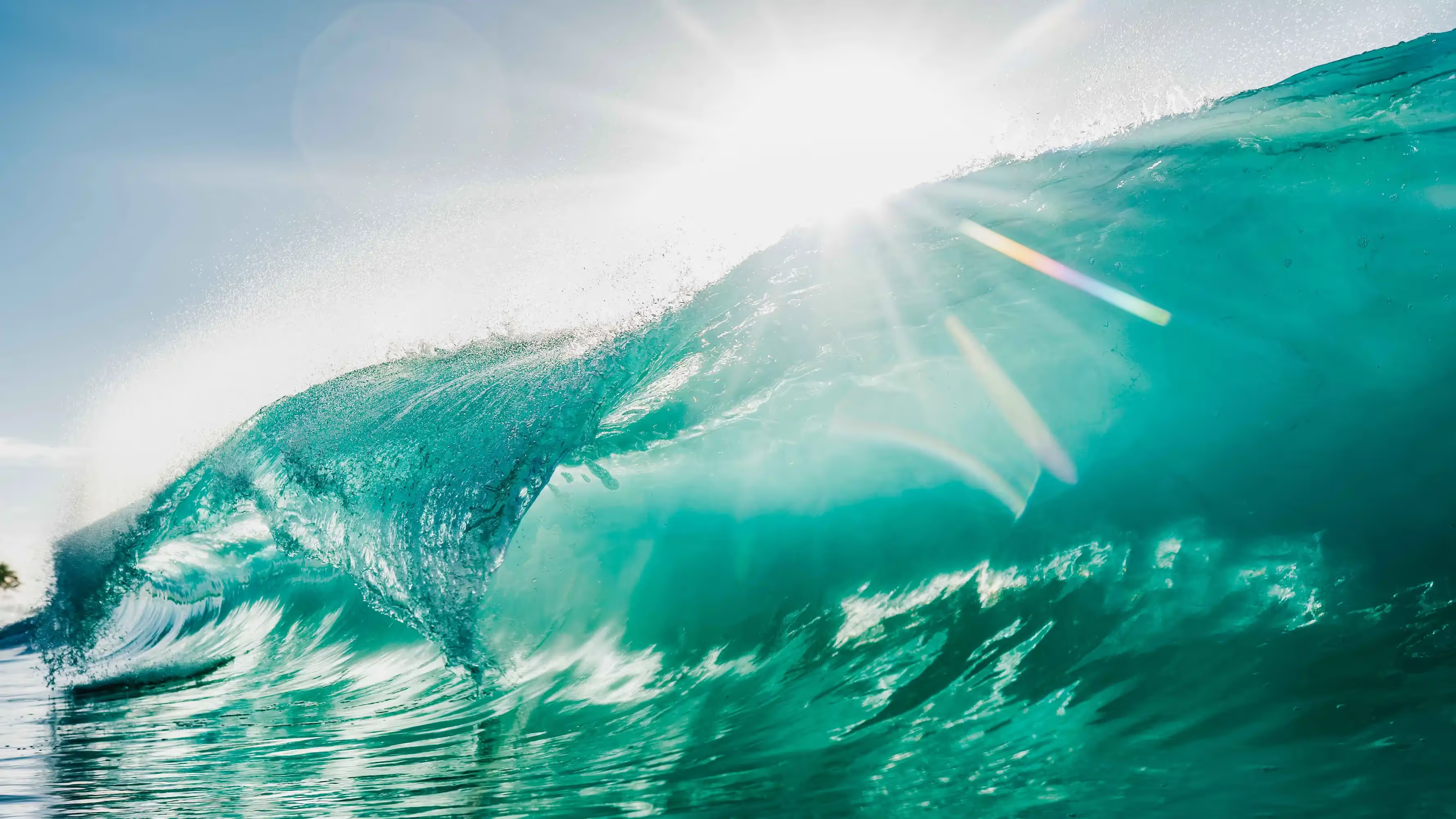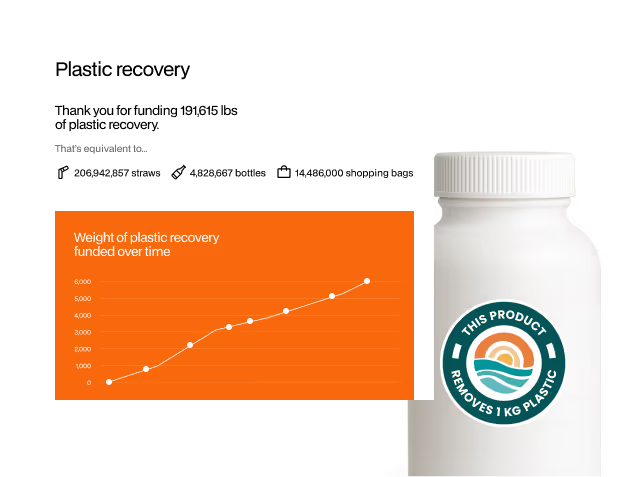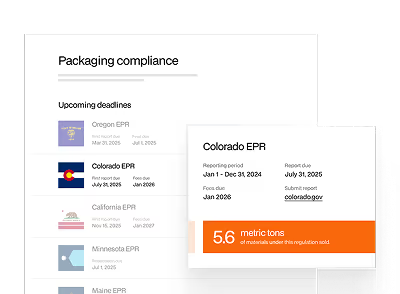Findings from the Breaking the Plastic Wave Report show that by 2040, current government and industry commitments are likely to reduce annual plastic leakage into the ocean by around 7%. With plastic waste set to triple by 2060, it is clear that decisive, systemic, and immediate action is required to address the challenge of ocean plastic pollution.
By the time plastic enters the ocean, it is usually too late to be recovered. Tragically, an estimated 95% of marine plastic is unrecoverable and will live on in the marine ecosystem. With more than 80% of ocean plastic coming from land-based sources, it is clear that the need for intervention lies in the stage before plastic waste becomes marine plastic litter.
We, as a world, need to revisit our approach and focus our attention on recovering and recycling this ‘ocean-bound’ plastic. Finance, infrastructure, and innovation are needed to do this and save our oceans from further plastic pollution. As an innovative financing tool, Verified Plastic Recovery - as a form of Outcomes-Based Financing - presents a lucrative solution to this problem.
The finance gap — oceans apart
The marine plastic pollution problem is often not well understood. Perceptions of the ‘Great Pacific Garbage Patch’ — for example — as a floating island of plastic that can be scooped up and recycled, belies the reality that higher concentrations of litter exist across large swathes of the Pacific, much of which is not on the surface and not immediately evident to the naked eye. The economic cost of marine plastic stands somewhere between $3,300 and $33,000 per metric ton annually, making marine plastic recovery and recycling a highly expensive and often unviable undertaking.
On the contrary, collecting and recovering plastics before they reach the oceans is an easier and more affordable way of reducing ocean plastic pollution. Low-value plastic, such as single-use plastic bags, chip packets, and other food wrappers are most likely to end up in our oceans. These remain at risk of entering our waterways and seas largely due to the lack of financial incentive for their collection.
Despite the urgency of the situation and growing concerns over ocean plastic pollution, the existing finance gap has been severely restricting progress in the plastic waste action space. The mighty sum of $30 billion per year is estimated to be required to tackle the ocean plastic crisis and set us on course towards our dream of a plastic-free ocean.
A solution to this problem can be found in Verified Plastic Recovery (VPR). VPR is a form of Outcomes Based Financing. In other words, an investment in VPR guarantees an outcome. But rather than a financial return, the outcome is that a certain amount of additional nature-bound plastic is collected and recovered by rePurpose Global impact projects.
This means that anyone, including businesses, governments, NGOs, and individuals can contribute to the recovery of ocean-bound plastic. VPR finances the removal and recovery of plastic waste by the projects — including low-value plastics that would otherwise be left to pollute the environment.
This is particularly relevant to businesses as the movement towards Extended Producer Responsibility (EPR) puts moral responsibility for the plastic waste crisis at the feet of the producers. Funding VPR can make action accessible and immediate for businesses. VPR funding, as well as efforts to reduce plastic use can allow businesses to be certified by rePurpose Global.

Getting infrastructure shipshape
VPR provides financial incentives for low-value waste collection, and also for investment in infrastructure. In many parts of the world waste management facilities either do not exist or are severely overburdened. Financial support for infrastructure expansion and capacity building is therefore critical.
VPR can address the infrastructure gap by financing its development and expansion. Using VPR finance, ocean-bound plastic waste recovery projects located close to coastlines can be developed and scaled to collect, recover, and recycle plastic waste that is bound for our oceans.
Through VPR rePurpose Global has financed ocean-bound plastic recovery projects in different regions of the world. In our impact project in Goa alone, we have removed and recovered over 450,000 kilograms of ocean-bound plastic. In addition to recovering ocean-bound plastic waste, the creation of new supply chains helps to create micro-entrepreneurial and livelihood opportunities for the local people.
Waves of innovation
New cutting-edge technologies and innovations also have their role to play in the recovery of ocean-bound plastic waste. Though there have been numerous innovations that aim to address the ocean-bound plastic pollution issue, very few have yet proved to be viable at scale.
One example is the Bubble Barrier: a Netherlands-based innovation. It is a litter capture technology that stops the flow of plastic waste from waterways into the ocean. The equipment uses an air compressor to send air through a perforated tube that runs diagonally across the bottom of canals. The stream of bubbles created traps plastic waste in a catchment system. Another promising innovation is Clearbot: An AI-powered boat that can identify, classify and collect waste from various water bodies.
Simple yet effective innovations like these can support our collective efforts to rid the seas of plastic. However, it is currently still costly to transplant this technology to ocean-bound waterways around the world. As more and more solutions become available, from litter capture technologies to circular model innovations and AI-driven tools, the hope grows that some will become cost-effective, scalable solutions.
VPR financing can have a crucial role here too, providing funding for innovations in pilot and scale-up stages that ultimately contribute to the effectiveness and scalability of these technologies.
Conclusion
We believe that the horror of plastic present in our oceans can become a thing of the past. It requires a coalition involving governments, brands, plastic recovery solutions, and waste pickers across the globe to unite — to take urgent action.
Of course, Verified Plastic Recovery is only a part of the solution. Reducing individual and business plastic footprints is still critical: we need to turn off the tap, as well as mop the floor. From product design to infrastructure and household use, we need to rethink solutions that go beyond waste management and consider the whole lifecycle of plastic products and their packaging so they don’t end up in our oceans.
Nevertheless, VPR can potentially play a big role in protecting our oceans from plastic waste. We have the opportunity now to deploy this financing tool towards the most effective, long-term solutions. Together we can provide the funding, infrastructure, and innovations required to stop ocean-bound plastic from entering our precious seas.


.png)
.avif)
.png)
.avif)






